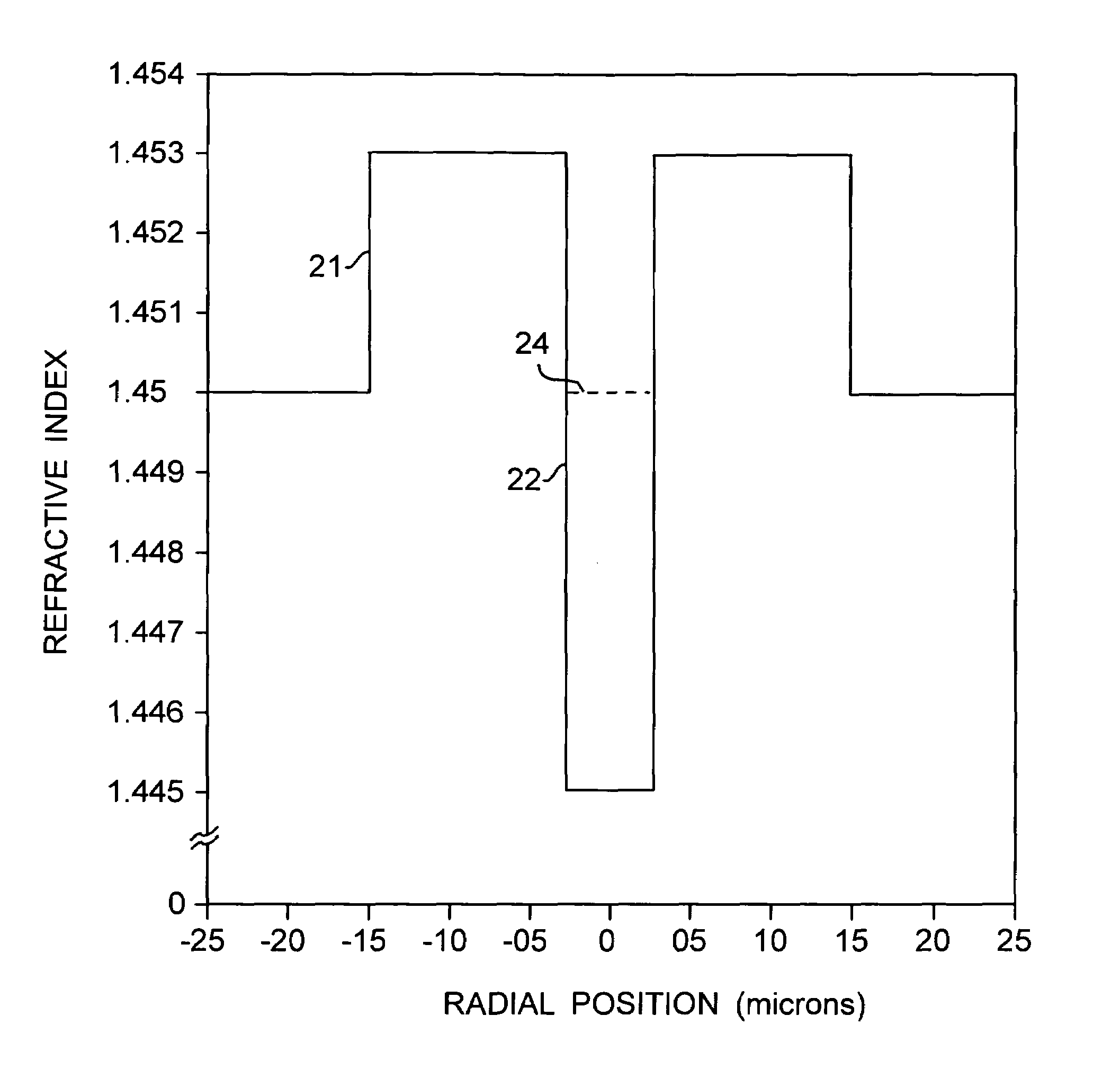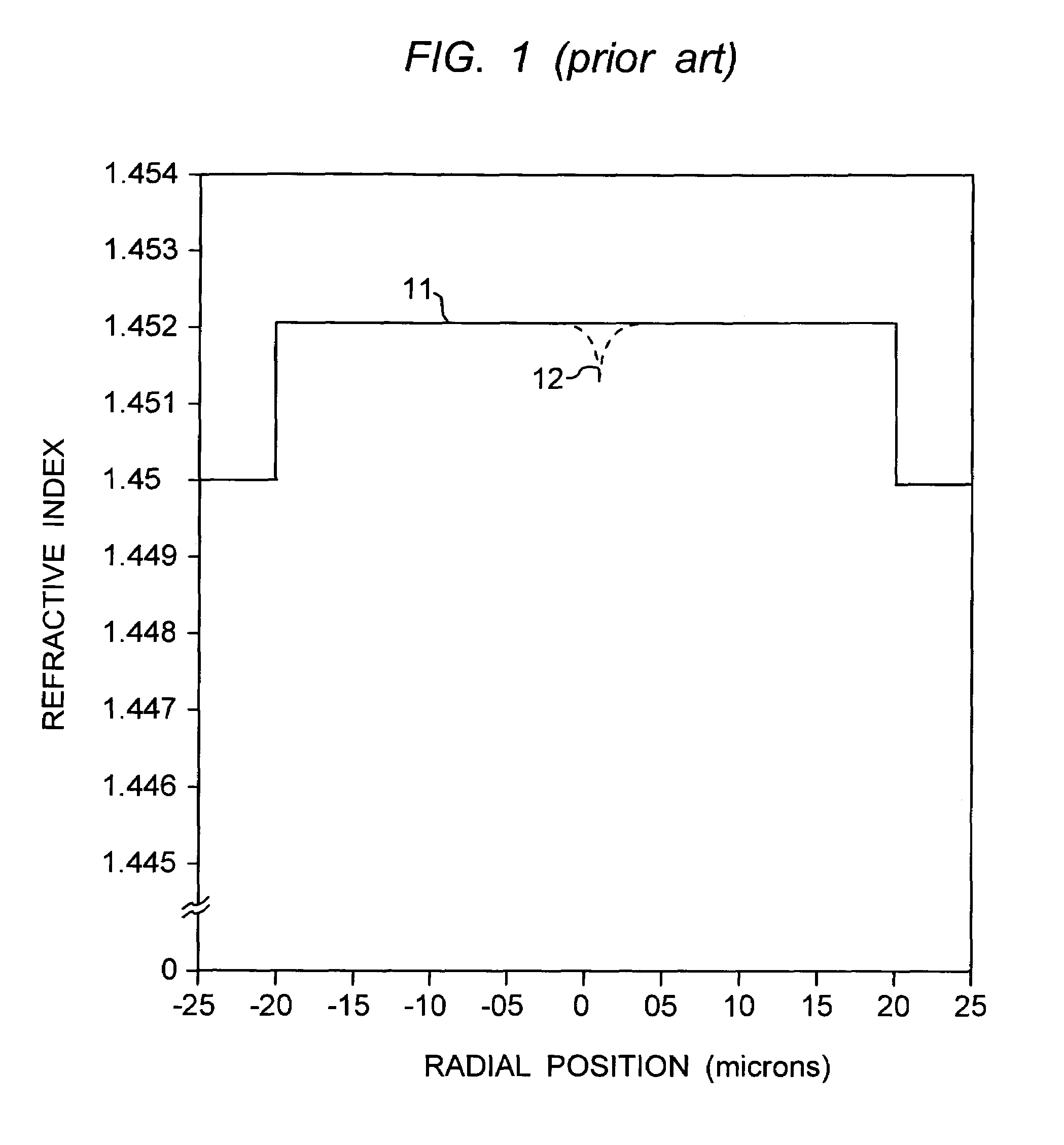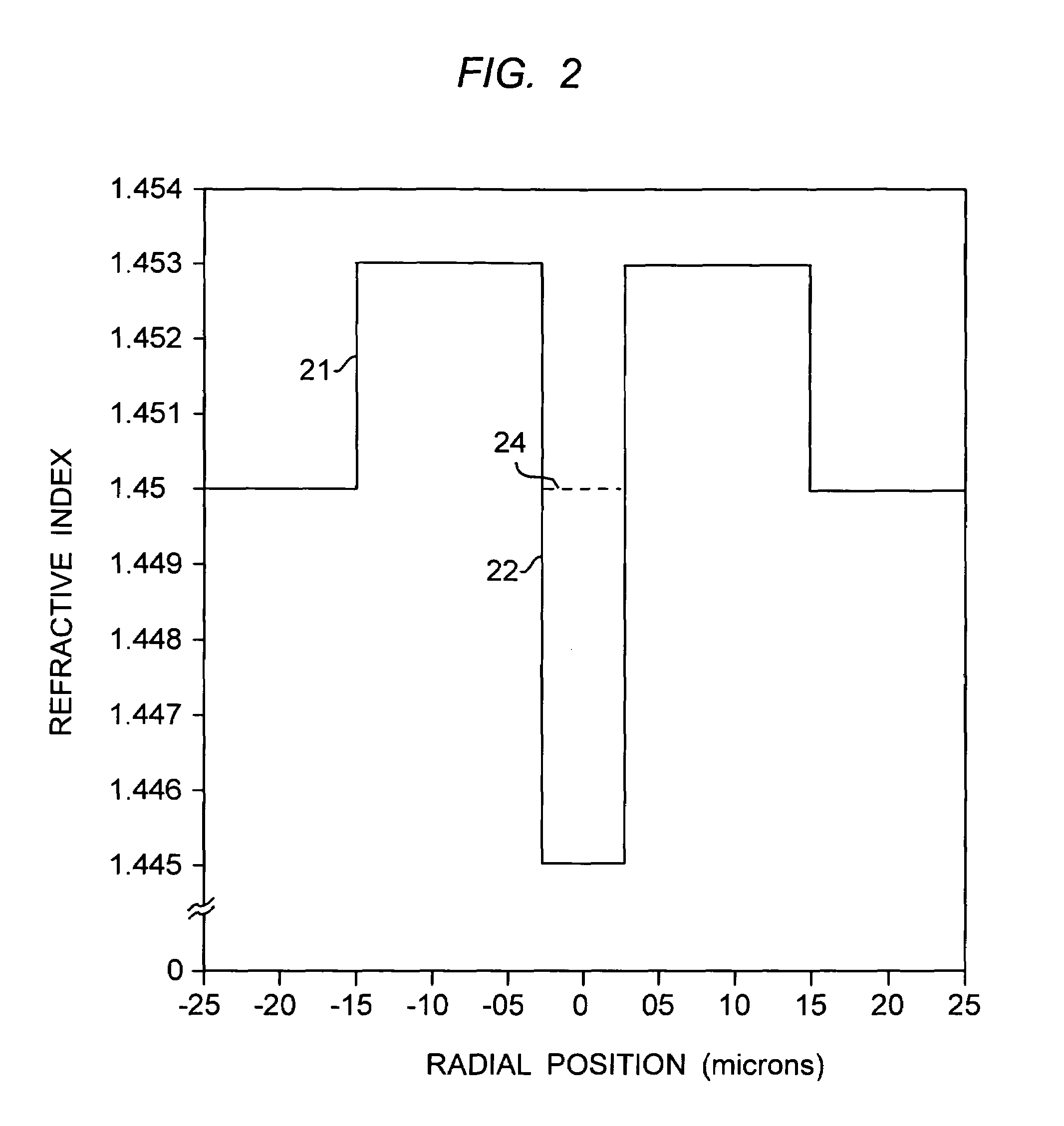Optical fibers for high power applications
a technology of optical fibers and high-power applications, applied in the field of optical fibers, can solve the problems of grossly non-uniform core refractive index of these fiber designs in the center core of the optical fiber, and achieve the effects of reducing optical power, reducing self-focusing in the optical fiber, and large area
- Summary
- Abstract
- Description
- Claims
- Application Information
AI Technical Summary
Benefits of technology
Problems solved by technology
Method used
Image
Examples
Embodiment Construction
[0013]FIG. 1 shows a refractive index profile 11 for a conventional large mode area step index fiber. The plot is refractive index vs. radial position, and is idealized for the purpose of the description and analysis presented here. The core is typically Ge doped to an index value of approximately 1.452. The cladding shown here is pure silica with a nominal index of 1.45. The focus of these figures and this discussion is the core of the optical fiber. A wide variety of cladding structures, having un-doped layers, down-doped trench layers, up-doped layers for microbending control etc. may be used with the core structures described here.
[0014]FIG. 1 shows a large core, approximately 40 microns in diameter (with a fundamental LP01 modal effective area of approximately 750 μm2 around 1 μm wavelength). The large core serves to spread the modefield of the optical pulse and maintain the intensity below the threshold for damage.
[0015]However, as discussed above, even large core fibers like ...
PUM
 Login to View More
Login to View More Abstract
Description
Claims
Application Information
 Login to View More
Login to View More - R&D
- Intellectual Property
- Life Sciences
- Materials
- Tech Scout
- Unparalleled Data Quality
- Higher Quality Content
- 60% Fewer Hallucinations
Browse by: Latest US Patents, China's latest patents, Technical Efficacy Thesaurus, Application Domain, Technology Topic, Popular Technical Reports.
© 2025 PatSnap. All rights reserved.Legal|Privacy policy|Modern Slavery Act Transparency Statement|Sitemap|About US| Contact US: help@patsnap.com



